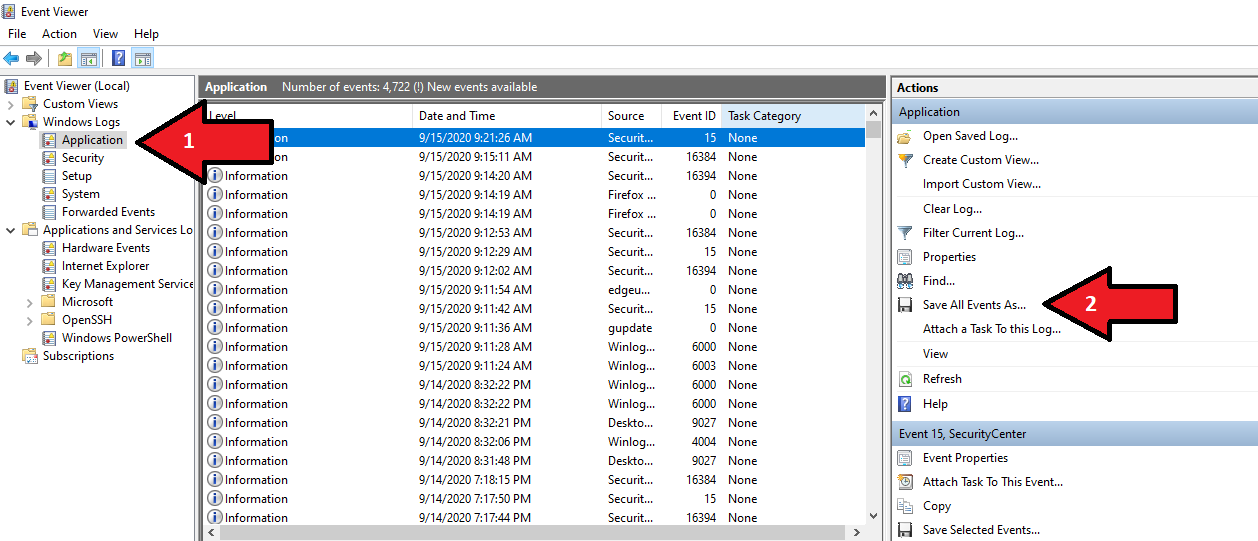PIX4Dmatic crash troubleshooting
This article outlines potential causes of instability in PIX4Dmatic and provides recommendations to help prevent the application from crashing.
IN THIS ARTICLE
Possible causes of PIX4Dmatic crash during processing
Possible causes of PIX4Dmatic crash before processing or during application launch
Reading the log file
Possible causes of PIX4Dmatic crash during processing
- Out-of-date GPU driver. Out-of-date GPU drivers can cause instability. To update the GPU driver look up the latest model-specific version available in NVidia Driver Lookup. Follow How to update the driver.
- Insufficient RAM. Larger projects require more RAM to process correctly. For more information review: PIX4Dmatic recommended hardware or PIX4Dsurvey recommended hardware. The RAM usage percentage [X%RAM] is shown within the log file throughout the entirety of the processing procedure.
[2023-08-07 15:34:45][97%CPU][34%RAM][Calibration sequence](Info) - Insufficient storage. Larger projects require more storage to process correctly. For more information review: PIX4Dmatic recommended hardware or PIX4Dsurvey recommended hardware.
- Using an external USB or network storage drive. Using an external USB storage drive or network drive is not recommended and can result in instability or crashing. Ensure that the project images and outputs are stored on the same internal drive for the best performance and stability.
- Unsupported operating system. For more information: PIX4Dmatic Download Requirements or PIX4Dsurvey Download Requirements.
- Antivirus application interference. If a 3rd party antivirus application is installed, ensure that it is not interfering with PIX4D by temporarily disabling the application. If that resolves the issue then check to see if the antivirus application has a program whitelist and add PIX4Dmapper to the list.
Possible causes of PIX4Dmatic crash before processing or during application launch
- Corrupted installation or Preview version. Ensure that the latest stable version is installed correctly. Uninstall PIX4Dmatic (How to completely uninstall PIX4Dmatic) or PIX4Dsurvey (How to completely uninstall PIX4Dsurvey) then download and install the latest stable version available. For more information: PIX4Dmatic Download or PIX4Dsurvey Download.
- Out of date GPU driver. Out of date GPU drivers can cause instability. To update the GPU driver look up the latest model-specific version available NVidia Driver Lookup.
- Unsupported operating system. Review the supported operating systems on the downloads page. For more information: PIX4Dmatic recommended hardware or PIX4Dsurvey recommended hardware.
- Antivirus application interference. If a 3rd party antivirus application is installed, ensure that it is not interfering with PIX4Dmatic or PIX4Dsurvey by temporarily disabling the application. If that resolves the issue then check to see if the antivirus application has a program whitelist and add PIX4Dmatic or PIX4Dsurvey to the list.
If these suggestions do not resolve the issue Contact Support with the following information.
- Description of the crash behavior
- When does it occur?
- Does it occur on different computers?
- Does it occur with different datasets?
- Is it reproducible?
- Project information
- Quality Report (only for PIX4Dmatic:
 Report Panel >
Report Panel >  Export)
Export) - Log File (Menu Help > Export project logs...)
- Image count
- Quality Report (only for PIX4Dmatic:
-
- GPU Make and Model and current driver version
- Quantity of RAM installed
- Quantity of Storage availableComputer information
Additionally, it may be helpful to provide the Windows event log. To generate this file:
- Start PIX4Dmatic or PIX4Dsurvey.
- Trigger the issue.
- From the Windows search field, open Windows Event Viewer.
- On the left panel, select Windows Logs > Application.
- On the right panel, click Save All Events As...
- Save the file as .evtx or .txt.

Reading the log file
PIX4Dmatic generates one or multiple log files within the lifespan of a project. Log files are useful as they show information about the system or the processing steps.
How to export log files - PIX4Dmatic
Learning how to effectively read log files generated by PIX4Dmatic is very useful skill. Analyzing these logs enables users to troubleshoot issues, optimize processing parameters, and enhance the overall efficiency of the projects.
System information
The first part of a log file is the system information. This section provides details on the PIX4Dmatic or PIX4Dsurvey version of the project, the Operating System, the computer hardware and more.
# PIX4Dmatic version: 1.62.0
# analyticsItpAutomarkingVersion version: 0.0.8
# autoGcpVersion version: 6.0.0
# calibrationVersion version: 15.0.0
# cameraCreationVersion version: 10.1.1
# cameraVersion version: 7.0.4
# densifyVersion version: 4.2.1
# dsmVersion version: 4.2.1
# image2bimLine3DVersion version: 3.0.0
# orthoVersion version: 8.0.0
# qrVersion version: 0.16.0
# sgmVersion version: 1.0.0-rc5
# skysegVersion version: 2.0.0
# srsVersion version: 5.10.0
# ID: cfeeac18-5832-42fb-95d0-306215b002e7
# Platform: Windows
# OS: Windows 11
# CPU: 12th Gen Intel(R) Core(TM) i7-12700H, cpus=1, threads=20
# RAM: 16GB
# GPU renderer: NVIDIA GeForce RTX 3050 Ti Laptop GPU/PCIe/SSE2
# GPU vendor: NVIDIA Corporation
# GL version: 4.1.0 NVIDIA 552.44
# Qt version: 6.7.0 (windows)
# Command Args: C:\Program Files\Pix4Dmatic\Pix4Dmatic.exe
Types of log entries
There are 5 types of log entries that PIX4Dmatic and PIX4Dsurvey are using:
- [Info] - General input data or operation details.
- [Warning] - Potential issues or non-critical alerts.
- [Error] - Critical errors or failures in processing.
- [Processing] - Ongoing processing updates.
- [UI] - User interface interactions and events.
